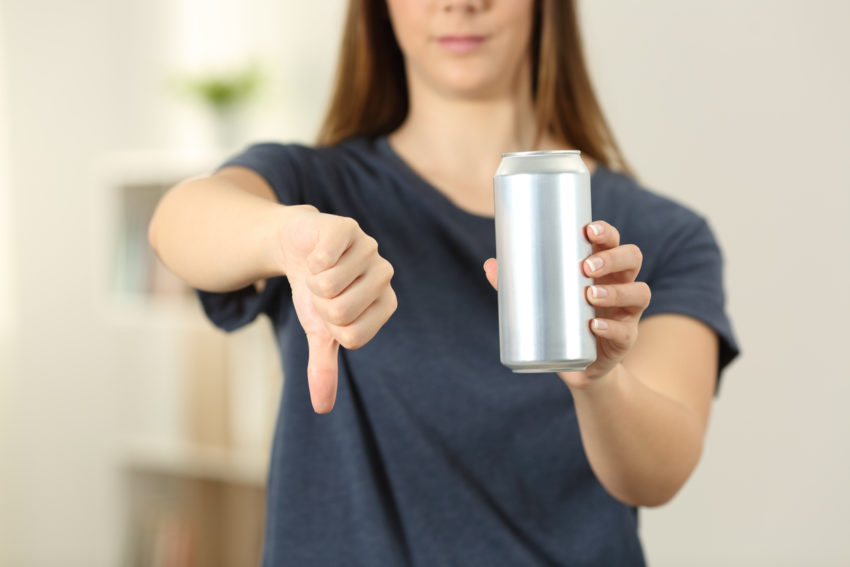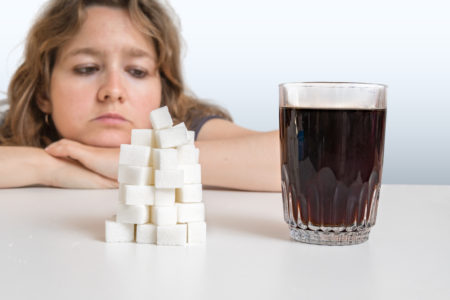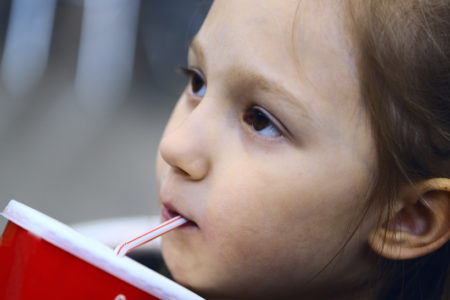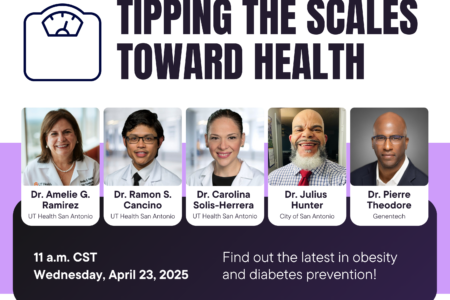
Share On Social!
Sugary drinks contribute to obesity, diabetes, and other health issues.
This is why many U.S. cities are trying to reduce the consumption of sodas, juices, sports drinks, and other high-sugar beverages by raising their price through sugary drink taxes. They then use the tax revenue to pay for local health programs.
Washington, D.C. (11.3% Latino), which already has a type of sugary drink tax, could transition to an even stronger sugary drink tax with its Nutrition Equity Act.
“Our lowest-income neighborhoods have the most limited access to healthy drinks and full-service grocery options,” said Dr. Federico Asch, a cardiologist and president of the American Heart Association Greater Washington Region Board of Directors. “We have a huge problem where, for example, many kids are drinking more than seven times the maximum amount of sugar recommended by American Heart Association.
“This is unacceptable and we must support the Nutrition Equity Act to provide better opportunities for all in D.C. to live better, longer, healthier lives.”
Washington D.C.’s Proposed Sugary Drink Tax
The Nutrition Equity Act aims to change the taxation system of sugary drinks.
If passed, it would remove the current 8% sales tax on sugary drinks and implement a 1.5-cent-per-ounce excise tax.
This seems like a small change, but it’s big.
Instead of a sales tax that increases the price of a $2 2-liter bottle of soda to $2.16 at the register, the excise tax would increase the price to $3.05 on the shelf.
“Excise taxes on sugary drinks are more likely to encourage a customer to make a healthy beverage decision because the increased price in the sugary drink appears at the shelf, not at the register,” according to Brianne K. Nadeau, the Washington, D.C., City Council member who introduced the legislation.
The regulation also would benefit the health of children in Washington, D.C., Nadeau said.
“The unhealthy consumption of sugary drinks is another area where a public health intervention would be beneficial,” Nadeau wrote in a statement. “Sugary drinks, like sports drinks and soda, represent a real health risk to kids. Scientific evidence shows that sugary drinks are a major contributor to increasing rates of heart disease and diabetes.”
Nadeau said the change also aims to help people of color. 
Latinos and other communities of color face targeted campaigns to raise the rate of sugary-drink consumption among these demographics.
“Additionally, there are major differences in how the beverage industry targets communities of color and the impact it has on the health of these communities,” Nadeau wrote in a statement. “Black children and teens see more than twice as many TV ads for sugary drinks as their white peers. Moreover, residents living in the lowest income neighborhoods have the most limited access to healthy drinks and full-service grocery options.”
Many local people spoke in favor of the change during a public hearing on May 19, 2021.
“We lock people up in my community for selling things that hurt folks. These sugary drinks are no different. This is a conspiracy to commit mass murder. My question to Council: why are these companies allowed to get away with it?” said Richard Shivers of Don’t Mute My Health, according to this tweet.
Students also expressed support for the sugary drink tax.
“Kids like me deserve healthy communities and schools, and that includes good nutrition for all,” said Ruby Reed, according to this tweet.
Lots of health organizations support the change, too.
“It is our collective responsibility as community leaders to support legislation that creates a space for equitable access to healthy foods and funding those efforts are critical at all times but particularly coming out of a pandemic,” said Dr. Yolandra Hancock, an American Heart Association volunteer and You’re the Cure advocate who works as a pediatrician in and around Washington, D.C. “There is no time like the present and no better legislation than the Nutrition Equity Act to ensure and fund equitable food access.”
Sugary Drink Taxes and How They Work
These kinds of regulations can make a big difference in the lives of many.
A soda tax can reduce purchases of sugary drinks, according to a recent study from Mathematica Policy Research and others.
Researchers examined the impact of soda taxes in Philadelphia, San Francisco, Seattle, and Oakland. They compared changes in household monthly purchases to nearby cities and a matched set of households nationally.
A 1-cent-per-ounce tax decreased household purchases of taxed sugary beverages by 53 ounces per month—a 12.2% decrease.
“This impact is small in magnitude and consistent with a reduction in individual consumption of 5 calories per day per household member and eventual reduction in weight of 0.5 pounds,” the researchers wrote in the study.
Seattle’s sugary drink sales dropped by 30%.
Researchers found a slight decrease in consumption, too.
Lower-income children in Seattle are drinking less soda than before the soda tax. But so are children who live outside the city, The Seattle Times reports.
In Philadelphia, a new study from Drexel University found that a year after the soda tax, 39% of participants inside the city and 34% of participants from neighboring areas said that they had consumed fewer sugar-sweetened beverages.
“Although this proportion may seem significant, for Philadelphians, it actually only translates to consuming three fewer drinks per month,” according to the study, wrote Medical News Today. “This is not at all a drastic change from the trends at baseline.”
Sugary Drink Taxes and How They Fund Health Programs
Cities are using sugary drink tax revenue to boost health.
This includes:
- Berkeley, Calif. (11.4% Latino): This city implemented the first U.S. sugary drinks tax. The Praxis Project’s video series shows how tax revenue is making people healthier, from schools to families to the arts.
- San Francisco (15.2% Latino): Revenue from the 1 cent-per-ounce tax funds preventive health services in low-income communities. It also funds programs to improve school nutrition and oral health.
- Seattle (18.3% Latino): Revenue from the 1.75 cent-per-ounce tax funds programs that help low-income people buy healthy food. It also helps subsidize schools and child care centers to increase servings of fruits and vegetables.
- Philadelphia (15.2% Latino): A 1.5-cent-per-ounce Sweetened Beverage Tax took effect January 2017. The measure is working, health experts say. Revenue is going to early childcare programs. It also is improving local parks, though progress is slow.
- Other cities have passed such taxes, including Albany and Oakland, Calif., as well as Boulder, Colo. They are also funding public health prevention programs.
“This positive impact is magnified by the fact that the revenue from the tax is being invested in health and wellness,” said Nancy Brown of the American Heart Association in a statement.
How You Can Help
It’s time to start making changes, Nadeau said.
“The District can no longer wait to address these health disparities head on,” Nadeau wrote in a statement. “It must identify areas where public health interventions and investments can make a difference in the health and lives of our communities.”
Sugary drink taxes are among five pediatrician-approved recommendations to limit sugary drinks:
- Raise the price of sugary drinks.
- Reduce sugary drink marketing to children and teens.
- Remove sugary drinks from kid’s menus. Emphasize healthy drink options.
- Add accurate nutrition labels and information.
- Hospital should serve as models with policies to limit or discourage purchase of sugary drinks.
Salud America! also created an Action Pack to help school leaders push for Water Bottle Fountains. This refillable water station can boost access to water for Latino and all kids.
Explore More:
Healthy FoodBy The Numbers
1
Supermarket
for every Latino neighborhood, compared to 3 for every non-Latino neighborhood



